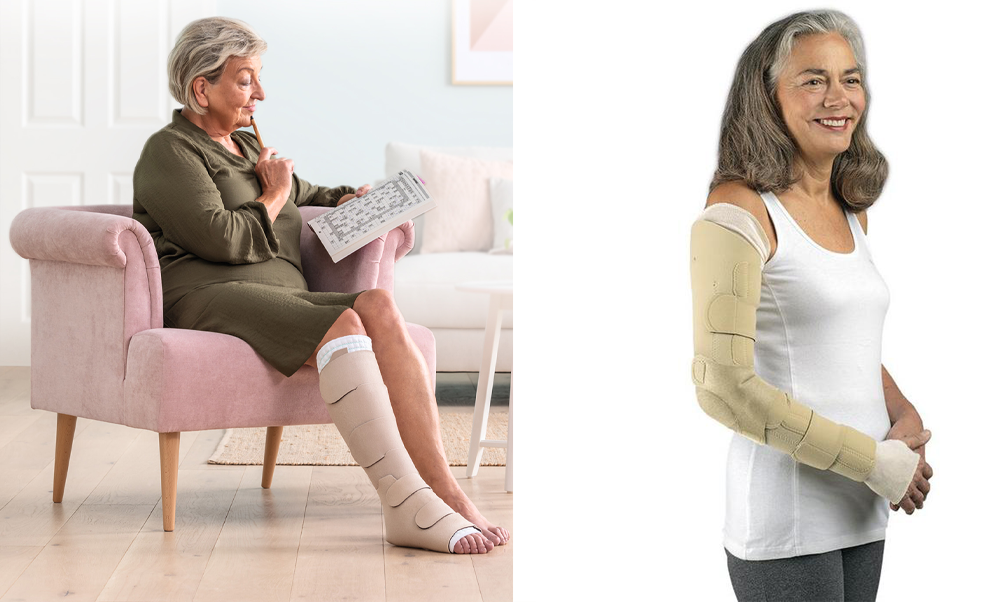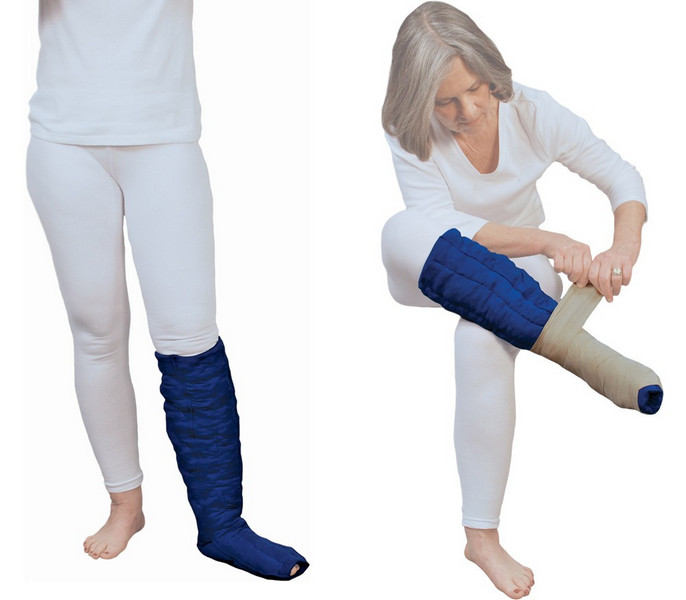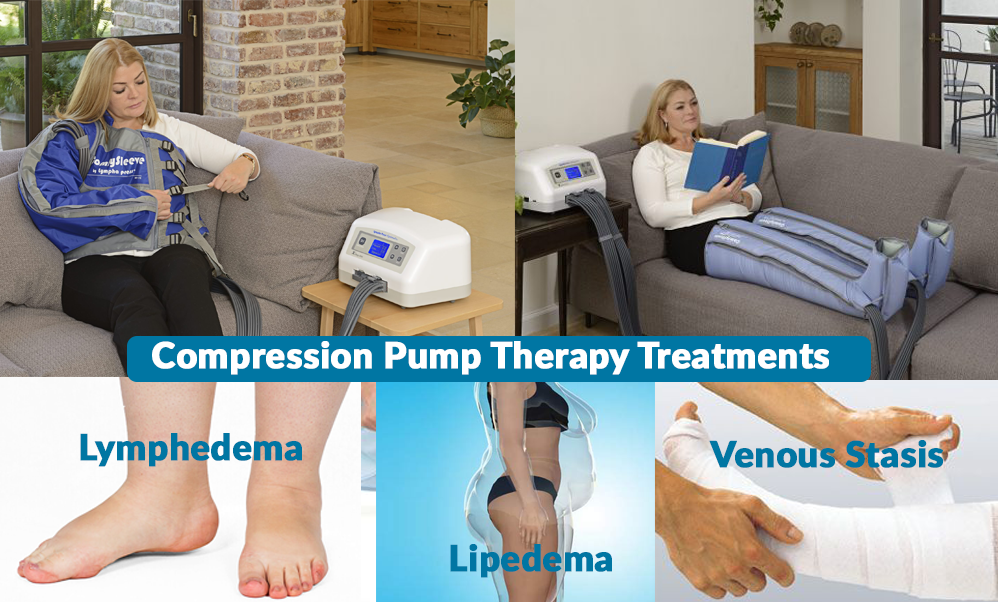Elastic Compression
Elastic compression garments are worn by a person with lymphedema on the affected limb following complete decongestive therapy to maintain edema reduction and to compress the arm or leg and encourage the flow of lymph fluid out of the affected limb. Wearing graduated compression garments is one of the easiest and most important ways to manage lymphedema. Compression garments are meant to be worn every day to maintain edema reduction and must be replaced on a regular basis.
We carry a variety of elastic leg stockings, toe caps, gloves, arm sleeves, hand gloves, hand gauntlets and vests.
“In Elastic” Compression
Inelastic compression garments is the opposite of elastic compression in that the products do not stretch when circumference changes occur as the result of body movement. So what occurs when the body is in movement is that the actual compression level under inelastic compression will rise and fall, thus creating a dynamic compression system.
This change in compression with inelastic compression has been demonstrated to have dramatic effects in improved venous hemodynamics and edema reduction. Inelastic compression is achieved with Unnas boot bandages, short-stretch bandages, multi-layer bandages as well as with inelastic adjustable wraps.
Non Elastic Compression (Foam-Lined and Padded)
These garments are directional flow, custom- made and off-the-shelf, therapeutic, nightwear, Wrap/Garment(s)for the treatment of lymphedema and chronic swelling with indurate tissue. Impairment of the lymphatic system has significantly reduced the normal capacity of the lymphatic system to provide tissue drainage necessary to ensure tissue health, to support normal immune response, and maintain fluid balance of the circulatory system in the affected quadrant.
These garments that will maintain gains made in therapy and continue to provide therapeutic intervention in the home setting.
Compression Pump Device
Pneumatic compression devices are compression pumps which force air in sleeves with multiple chambers which house overlapping cells. The pump forces air in to the cells which encourage lymph fluid to continue moving and not pool. Lymphedema Pumps are not just a reactive treatment but in many cases they aid in softening fibrotic tissues which will create an environment for higher efficiency lymphatic drainage.
Pneumatic compression treatment is used to treat a wide range of venous, lymphatic and arterial disorders.




